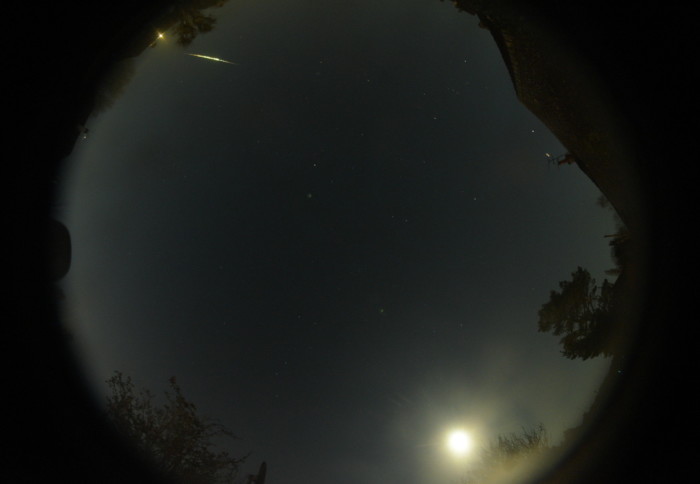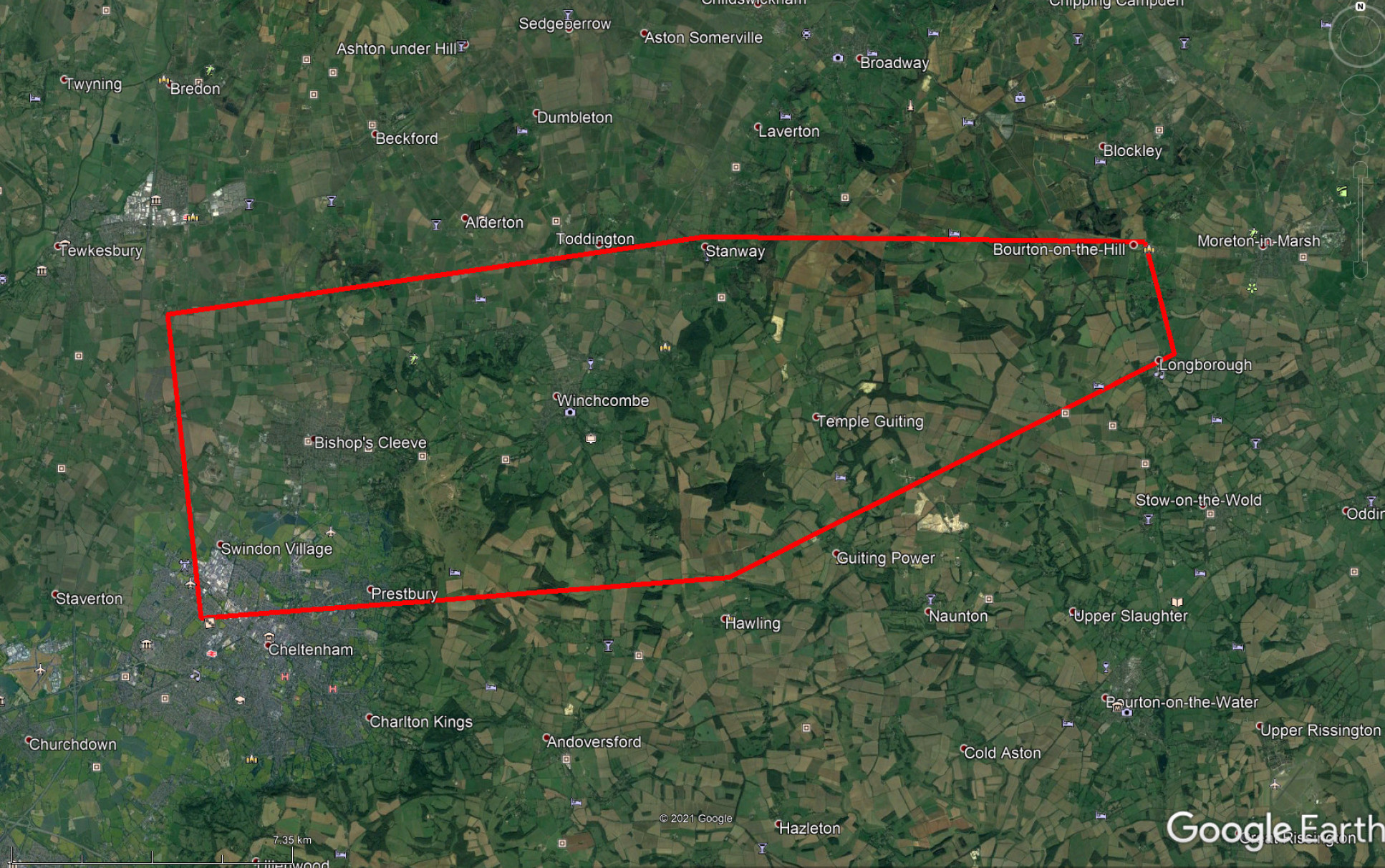February's record-breaking fireball may have dropped meteorites
by Nicky Jenner

Image of 28/02/21 fireball, Welwyn camera in Surrey (Credit: UK Fireball Network)
At 9:54pm on Sunday 28 Feb a meteoroid entered Earth’s atmosphere, creating a spectacular yellow-green fireball in the skies over Gloucestershire, UK.
This fireball was visible from as far away as the Netherlands, and was travelling so fast it sent a sonic boom across southern England. The fireball's speed – some 30,000 miles per hour – is too fast for it to have been human-made ‘space junk’ such as an old rocket or satellite, and models show its orbit to be that of an asteroid that spent most its life between Mars and Jupiter.
It has been reported by over 750 observers – one of the most-reported fireballs ever – and was imaged by the UK Fireball Alliance (UKFAll), a collaborative data-sharing initiative involving researchers from Imperial College London and the University of Glasgow, as well as citizen scientists. UKFAll has more than thirty cameras in the UK continually monitoring the sky for meteors and fireballs, at least six of which picked up the fireball as it entered our atmosphere (Cardiff, Manchester, Honiton, Lincoln, Cambridge and Welwyn (Surrey)).
"We think that fragments are likely to have reached the ground in or just north of Cheltenham" Dr Luke Daly University of Glasgow and UKFAll
In collaboration with other international meteor networks, UKFAll analysed the meteor's path through the sky, and is still refining the locations at which meteorites are likely to have fallen. The meteoroid appeared to fragment several times as it entered the atmosphere, and was visible for about six seconds. "Though the meteor mostly vaporised during these initial seconds, we think that fragments are likely to have reached the ground," says Dr Luke Daly of the University of Glasgow and UKFAll: "If pieces landed, they're likely to have been in or just north of Cheltenham, out towards Stow-on-the-Wold, probably on farmland."

One of the cameras that picked up the fireball, the Welwyn camera near Guildford in Surrey, is operated by Dr Martin Suttle, who works as a researcher at the Natural History Museum after having completed his PhD in Imperial's Department of Earth Science and Engineering. The camera, installed on his parents' roof, is part of the UK Fireball Network (UKFN), a network coordinated by Dr Luke Daly and Sarah McMullan.
About twenty meteorites land each year over the UK – most barely the size of a sugar cube Sarah McMullan Department of Earth Science and Engineering
Sarah McMullan, a PhD student in Imperial's Department of Earth Science and Engineering and member of UKFAll, estimates that about 50 tonnes of extra-terrestrial material enters Earth's atmosphere each year. McMullan says: "Most are sand-sized particles known as cosmic dust, including those in the Perseid meteor shower that takes place every August. But even over a relatively small land area like the UK, about twenty meteorites probably land each year. Most are barely the size of a sugar cube. However, two or three are bigger, and that's probably the case with this one. Every few years a much bigger one will arrive."
Studying fireballs such as this, and hopefully locating any resulting meteorites, offers a valuable opportunity to understand where and how these celestial bodies formed, and how much dust they may have brought to Earth since the early days of the Solar System. Of the roughly 65,000 meteorites found worldwide, only 40 or so have been photographed arriving as fireballs. Monitoring a meteor's path through the atmosphere from multiple locations, as enabled by the UKFAll network, is needed to accurately model an object's possible landing and, crucially, enable the meteorite's recovery before it is contaminated.
The UKFAll team emphasises the importance of adhering to COVID-19 restrictions and not hunting for any meteorites, and avoiding contamination. Anyone who finds a meteorite should photograph it in place, note its GPS location, and avoid touching it with anything magnetised or their hands, instead picking it up with a clean bag or aluminium foil.
If you have a photo or video of the meteor, please upload and share at: https://ukmeteornetwork.co.uk/fireball-report/
Article text (excluding photos or graphics) © Imperial College London.
Photos and graphics subject to third party copyright used with permission or © Imperial College London.
Reporter
Nicky Jenner
Department of Earth Science & Engineering